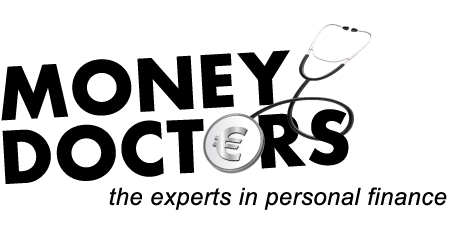1. Plan it – there is a difference between saving and investing – saving is generally short term and immediate while investment is for a minimum period of three to five years. You have to work out initially, how much disposable income you have – that is, after tax, and after rent/mortgage, household bills, food, petrol and “spending money”. You might even know how much money you can afford to put away already. The most important decision about savings can be summed up in one word – START. By planning to save, you are setting immediate goals – for holidays, that new plasma screen television or funding Christmas presents etc and you should have the ultimate goal of having between 3 and 6 months annual income in a Rainy Day Fund (RDF) or emergency account for three very good reasons
-
- For emergencies ( washing machine breakdowns, weekend breaks )
- As a safety net ( in case of loss of income, interest rate increases etc )
- For seed capital for unexpected investment opportunities ( or helping your children with their first property )
2. Budget for a savings account – find out where all your small change / “living expenses” go to by writing down everything you spend outside of the usual bills over a period of a couple of weeks. Did you really need that bar of chocolate when you bought your petrol ? At a glance, you will be able to see exactly where to make savings and save ! Email me for a free budget planner spread sheet – simple to use, easy to operate and tots itself up
3. Cut down your household utility and travel bills – when you analyse your household bills, you will find you may have left the lights on for too long, or not used the washing machine on the night-time rate or had the central heating blazing while you were away for the weekend. Buy discounted bus passes, a bicycle – over time, not only is it cheaper but better for you physically – or the Last Minute type holidays. You will find many ways to reduce those overheads
4. Cut down your banking bills – overdrafts and especially those exceeding the limits should be a no-no. Apart from the arrangement fee and the high interest rate ( 12% – 15% + ), once you have exceeded your overdraft limit, referral fees ( currently € 5.50 and charged EVERY day once the overdraft limit has been exceeded ), surcharges ( an additional interest over that already being charged – can be another 12% ) and unpaid fees ( when the bank decide to send back your cheque and not honour it – you are being charged € 12.70 for this transaction ) all take their toll on your disposable income. Credit cards are similar – try and use it like a charge card and pay off when the bill is due. Best credit card interest rate is AIB Bank’s Click Card at 9.15% but be wary of taking out cash – they charge a whopping 26% from the time you withdraw ! If you cannot pay off your credit card balance, try switching to another provider at 0% =- best is An Post Money’s 12 month balance transfer…You should also shop around for the best mortgage and loan deals, not to mention those insurance premiums – life, health, travel, even your car – they should all be compared with the best on the market – or through an adviser.
5. Cut down your food and toiletry bills – go generic. Instead of buying the most expensive brand name ( after all, you are paying for the marketing and glossy packaging ) buy your favourite store’s version or at least try it for a few weeks or until you have achieved your savings goal. You could be saving up to 50% of the brand leader’s price. Also shop with pre-written lists, check your cupboards first and write down a daily list of shopping requirements as they arise for your prewritten list.
6. eBay it – a great way to immediately set the ball rolling on your savings is sell some of your unwanted items from clothing ( fashion dresses ) to sports and household goods. Your old mobile phone might be a great way of starting your savings programme. eBay is probably one of the best mediums for this kind of transaction or the Buy & Sell magazine.
7. Loose change – did you ever compile your loose change over the period of a month. You would be amazed at how quickly you can accumulate a few euro in a short time. A box, basket, jar or anything that collects coins should be left in your hall / bedroom and just wait for the results.
8. Tax yourself – Joline Godfrey ( Raising Financially Fit Kids ) suggested that when you make non-essential purchases, you should put 10% of the price into an envelope for lodgement into a savings account and continue that habit until your desire to buy non-essential items wanes. She also suggests that you should cultivate your children and grandchildren to save by encouraging them to save one third of their pocket money into a savings account and perhaps as parents match it.
9. Monthly checks – while you will be saving from your income, remember you will also be saving from some of the other ideas. Be sure to record these and ensure that those savings are being lodged into your account. Keep a colour coded graph or something pictorial to remind you of your savings progress. Even after you have reached that saving goal, continue the habit – it’ll be in your best interest !
10. Find the right savings / deposit accounts – there is no point in saving in a current account now that deposit interest rates are on the rise. Albert Einstein was accredited as saying Compounding is mankind’s greatest invention as it allows the reliable systematic accumulation of wealth. Many of the top deposit accounts have some minimum and maximum thresholds so you need to do a little research to find out where is the best account for you With the government’s blanket guarantee on deposits up to € 100,000 per person per institution in Irish owned financial institutions, you now only have to find where the best rates are. Therefore your choice is simple
-
- Ensure your deposit – taker is safe and secure, not to mention compliant and regulated
- Once this is established, it is a simple matter of finding the best rate – better in your pocket than theirs !
Whatever you do, when it comes to saving money don’t do nothing !

